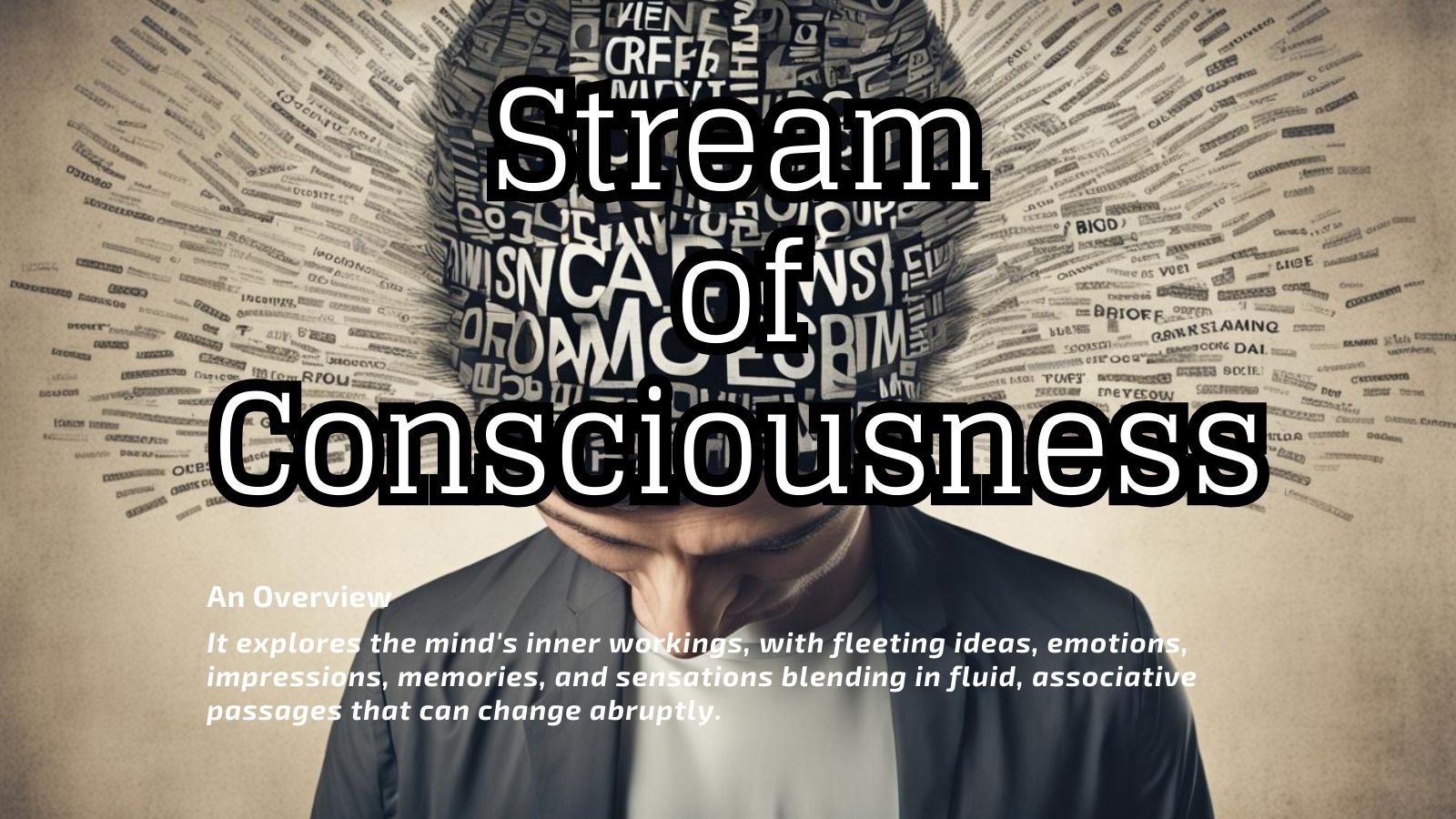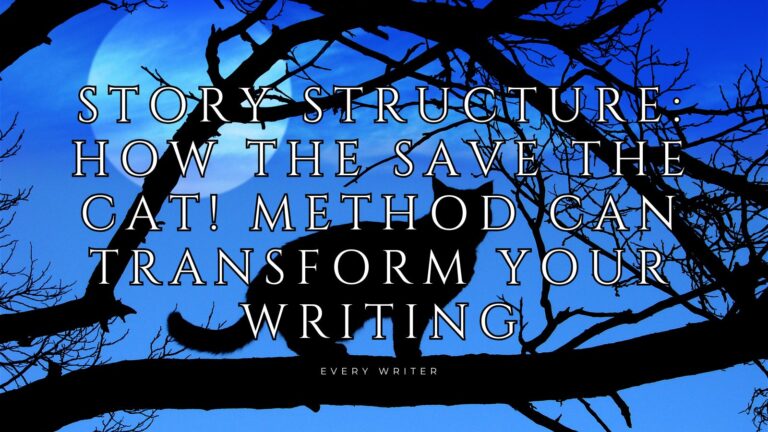Defining Stream of Consciousness
Stream of consciousness refers to a literary narrative technique that seeks to portray the natural continuous flow of a character’s stream of thoughts and perceptions rather than present a conventionally structured story. It explores the mind’s inner workings, with fleeting ideas, emotions, impressions, memories, and sensations blending in fluid, associative passages that can change abruptly.
Stream-of-consciousness writing attempts to replicate the haphazard ways our brains process the world before organizing information into logical narrative sequences. There is little plotting or structured story arc – instead, we get snapshots racing across a character’s consciousness, just as thoughts constantly dart in and out of our minds.
The style forgoes rules of grammar, transitions, and traditional prose in favor of expressionistic, philosophical ruminations on existence through raw inner monologues.
Origin of the Term
The phrase “stream of consciousness” was coined in 1890 by pioneering American philosopher and psychologist William James in his principles of psychology. He described consciousness not as fixed but as a flowing stream of impressions filtering through our awareness ceaselessly.
This metaphor struck a chord for capturing human perception and thought patterns in vivid new ways on the page. Writers sought to explore inner lives and emotions separate from time, setting, and plot constraints.
Origins and Evolution of Stream of Consciousness Writing
Stream of consciousness is a narrative style that emerged in the early 20th century as a radical departure from structured, chronological storytelling. It attempts to directly replicate the spontaneous and often chaotic flow of thoughts we experience in our minds.
The term was coined by American psychologist William James in 1890 to describe human cognition as an ever-shifting stream of thoughts and sensations. Seminal modernist writers embraced this technique in literature to convey inner experiences in vivid new ways.
Key Stream of Consciousness Writers & Works
- Virginia Woolf was one of the first to experiment with the “life of the mind” concept in novels like Mrs. Dalingham’s Journey (1914), Jacob’s Room (1922), and To the Lighthouse (1927), integrating characters’ raw perceptions and emotions.
- James Joyce took a stream of consciousness further in Ulysses (1922) and Finnegan’s Wake (1939), structuring novels as meandering passages of sounds and loosely associated ideas.
- William Faulkner used flowing consciousness to build intricate, emotional inner worlds in The Sound and the Fury (1929) and As I Lay Dying (1930).
- Other modernist writers who advanced stream of consciousness style include Dorothy Richardson in Pilgrimage (1915), Italo Svevo in La Coscienza di Zeno (1923), and Marcel Proust in his seven-volume epic In Search of Lost Time (1913-1927).
While not all mainstream, the stream of consciousness established a niche showing characters in a profoundly intimate light, still influencing contemporary first-person narratives today and harnessing interior storytelling methods.
Experimentation in Early 20th-Century Literature
Several pioneering modernist novelists pioneered stream-of-consciousness style in the early 20th century as a radical movement against conventional linear storylines. Seminal examples that became literary classics include:
Virginia Woolf’s Mrs. Dalloway (1925) and To The Lighthouse (1927) incorporated lyrical passages tracing characters’ erratic thoughts and observations. James Joyce’s Ulysses (1922)
I revolutionized interior monologue, with 60 pages chronicling one character’s mental meanderings during an ordinary day. William Faulkner explored disturbing psychological depths through flowing consciousness in critically acclaimed novels like The Sound and The Fury (1929) and As I Lay Dying (1930).
These early stream-of-consciousness novels not only transformed narrative formats but also revealed nuances of human experience that no traditional prose could capture. The reader intimately experiences all sensations passing through the character’s mind as immediate first-hand observers.
From the Beats to Postmodernism: The Enduring Influence of Stream of Consciousness
While pioneered in high modernism, stream of consciousness also left an impression on counter-cultural, artistic schools emerging later in the 20th century that similarly sought to challenge conventional structure in favor of free-flowing personal expression.
The Beat writers of the 1950s/60s like Jack Kerouac, Allen Ginsberg, and William S. Burroughs, often employed long, winding passages of uncensored, introspective memories and sensations in novels like On the Road, Howl, and Naked Lunch to invoke manic, dream-like journeys. Their stylized first-person vignettes of gritty bohemian lives reveal striking shades of the modernists’ interior monologues decades earlier.
In academia, postmodern critical theory explores how stream-of-consciousness writing creates its self-contained reality where objective truth blurs. Foundational works like The Crying Lot of 49 and Gravity’s Rainbow integrated discordant strands of dissociative thought flow. Today’s avant-garde texts continue radical narration innovations in this vein.
Even thoroughly modern first-person memoirs, personal essays, and short nonfiction borrow atmospheric, character-driven show-don’t-tell reporting that was once considered fiction. Literary journalism and intimate vignette reflections hassled down directly from early stream-of-consciousness risky boundary-breaking. Any time we privilege raw sensory impressions over strictly factual accounts, traces of Woolf, Joyce, and Faulkner’s visions emerge.
Their genre-defying experiments forever expanded expressive possibilities across countless literary movements feeling constraints of hidebound narrative tradition. Stream of consciousness opened conduits between creativity and cognition we continue traversing today.
Influence on Contemporary Literature
While complex for some readers, stream of consciousness opened new horizons for depicting inner lives that still influence contemporary first-person narratives today. From the Beats to Slouching Towards Bethlehem essays to Postmodernism, traces of impressionistic stream-of-consciousness style permeate our understanding of modern identity and relationships. Virginia Woolf’s groundbreaking approach to revealing consciousness remains one of the most revolutionary developments in 20th-century fiction.
You can find many more tips on writing and style at Writing Tips on our site.
- Story Structure: How the Save the Cat! Method Can Transform Your Writing - April 23, 2025
- HALFWAY TO HALLOWEEN: 50 Words of Horror Contest - April 22, 2025
- How to Edit your poetry for beginners and beyond (with worksheet) - April 18, 2025






